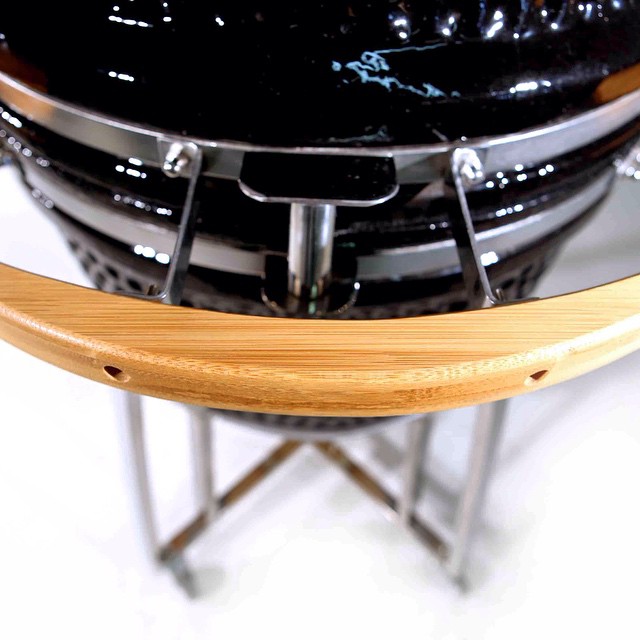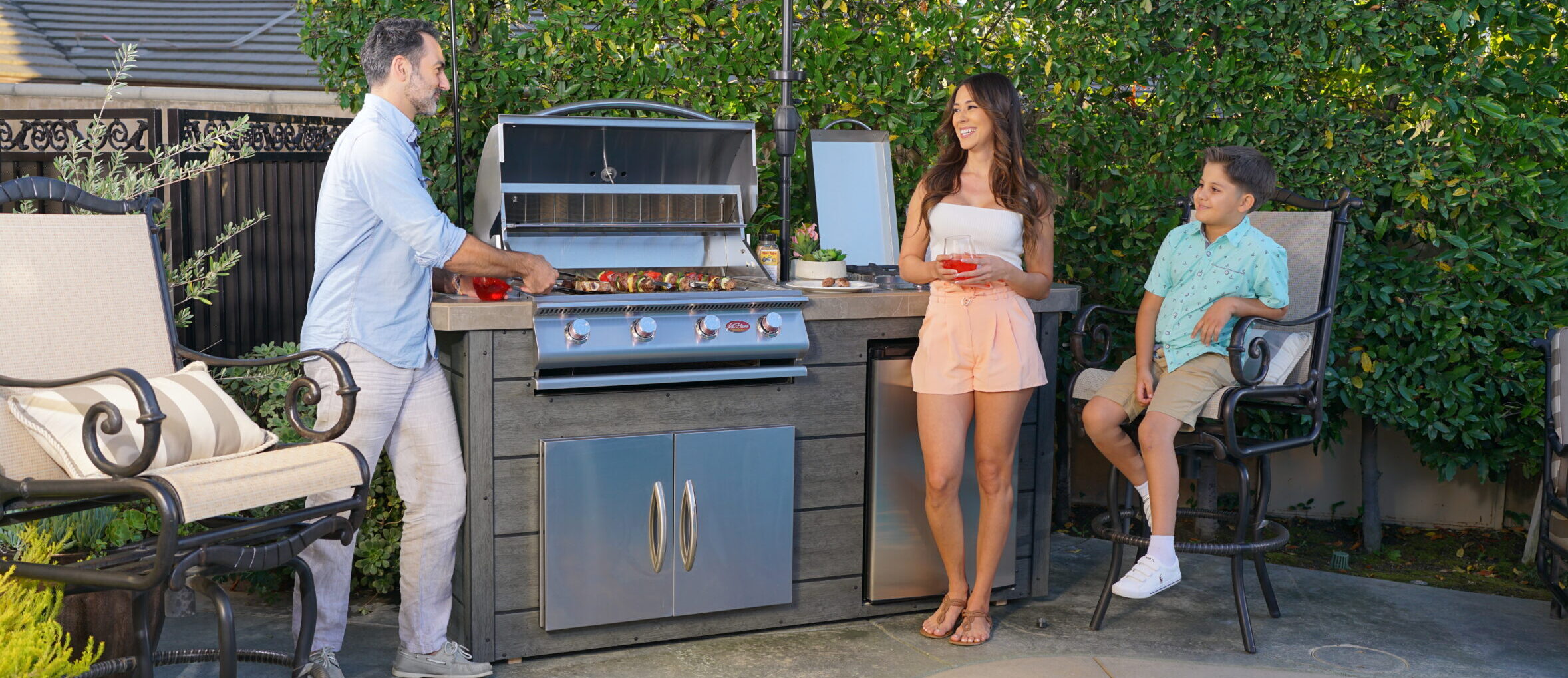Ceramic Grills
Pool & Spa News recently reported about the increased popularity in ceramic grills:
Cooking with ceramics began thousands of years ago and is an ongoing practice on every continent. With all the fine cooking qualities that ceramics have to offer, we shouldn’t be surprised that they have arrived in American-style barbecue cookers in a big way.
Here, I’ll explain the science behind the ceramic cooker and why it might be a key ingredient that’ll add more flavor to your customers’ upcoming Memorial Day barbecue parties.
An ancient cooking method
After developing for thousands of years in Asian countries, the kamado-style ceramic grill was finally discovered by American military personnel during World War II in Japan. As they began to ship these cookers home, the U.S. became exposed to a new, yet ancient, method of cooking.
Originally used for all types of food, including rice and soup, the kamado’s properties were especially well-suited for backyard barbecue cooking. Because the kamado does not require a lot of air and fire to keep it hot, it tends to eliminate flare-ups, hold an even temperature, preserve moisture and burn very little charcoal in the process.
These unique properties help it to function well for high-temperature grilling, slow smoking and even baking. Here’s why:
Grilling: The kamado can get extremely hot for grilling and searing. It actually looks a lot like a ceramic pottery kiln. It may be used with the dome open, but is usually closed to hold in the heat and moisture.
As with most other charcoal-fired grills, the charcoal is placed on a grate in the bottom, and the cooking grid is then placed above. In most models, you can get the food close to the coals if you really want intense heat. Because of the gasket seal and air control, you also can slow the grill down for more gentle grilling temperatures and control or eliminate flare-ups.
Smoking and roasting: Smoking is probably what ceramic kamados are best recognized for. The ability to cook at low temperatures for many hours on a small amount of charcoal makes the whole process a lot easier. Most units will smoke for 10 to 15 hours or more on less than 10 pounds of charcoal. The size of the cooker and temperature settings will add more or less to those figures.
Indirect heat, low temperatures and smoke are the keys for smoking food. Most kamados use a ceramic barrier to provide the indirect heat. Pans, with or without liquid, may also be used to avoid the direct radiant heat from the charcoal. This flat, ceramic piece is placed between the charcoal and the food. A pan of some sort is often placed on top of the ceramic piece to catch the grease drippings. Now the user can place the meat on the grid and they’re ready to smoke.
Because of the indirect, convective heat flow and some radiant heat from the dome above, the user has even heating all the way around the food. No need to turn the food or use a rotisserie.
As for smoke, there are many species of wood that can be used to add flavor. Dealers should consider carrying bags of various varieties in chips or chunks. (Even for regular grilling, it is nice to throw in a small handful to add that extra touch of smoke flavor.)
Baking: Using the same indirect-heat method, a ceramic kamado can bake anything your customer would put in a conventional oven: breads, cakes, cookies, pies.
Of course, pizza is the backyard favorite. A kamado basically turns into a wood-fired pizza oven with a bit of fuel and a pizza stone. At high temperatures, a kamado can crank out pizzas very quickly.
Fuel of choice
Natural lump charcoal is the preferred fuel for kamados and it is easier to light.
It is just regular pieces of wood (you can still see the grain) that is turned into charcoal. Since it is not crushed up and compacted into dense little briquettes, it lights much easier. Most standard “charcoal” briquettes have a whole lot of coal added. Coal is a fossil fuel out of the ground (like you needed me to tell you that). It’s good for heating and blacksmithing, but not the same as natural wood charcoal. Since the lump charcoal doesn’t have any additives, you don’t have to wait for the whole pile to burn off those extra ingredients before you start cooking.
And you can skip traditional lighter fluid.
Most kamado manufacturers recommend or require that you do not use lighter fluid. It smells bad anyway. Electric starters are inexpensive and make starting the charcoal easy. Different types of starters are available. For the standard type with a heating element, put the charcoal around the element and let it go about 7 or 8 minutes. Then pull the starter out and let the charcoal continue to bring the grill up to temperature for another 5 to 15 minutes, depending on how hot you want the grill.
After they’ve done it a few times and get their routines down, your customers won’t think of it as difficult or time consuming anymore.
There’s not much clean up required, either, as there is not much ash produced.
The beauty of kamado cooking is that the customer can cook anything, with a minimal amount of preparation, hardware or fuel, and turn out championship barbecue foods.
To read more information about Pool & Spa Scene, click here.
To purchase Cal Flame’s Kamado Smoker Grill, contact your nearest Certified Cal Flame Dealer here.
